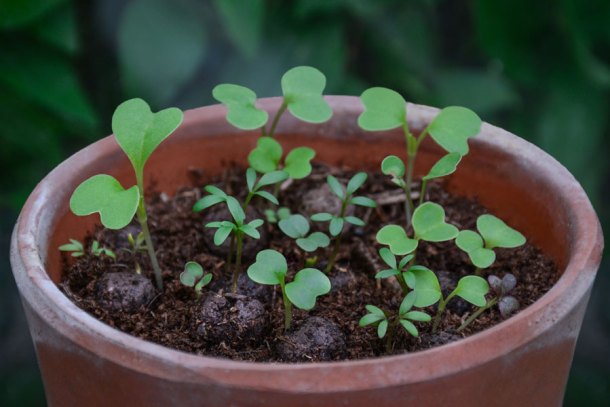While Rotary International President Ian Riseley is encouraging afforestation, and urging Rotarians to plant a sapling each, the seed ball technique is quietly catching up with the green volunteers across the country.
The ancient concept of seed balls, also called clay dumplings, was rediscovered by a Japanese farmer, Masanobu Fukuoka, known for his revolutionary ideas on re-vegetation of land. Seed balls are often used as a handy weapon in ‘guerrilla gardening’ (gardening on land that the gardeners do not have the legal rights to utilise, such as an abandoned site, private property, etc).
Seed balls comprise a mixture of fertile red soil, cow dung, cow urine and other bio compost. The semi-solid mix is prepared by adding water proportionate to the quantity of the mixture, after which a particular plant seed is inserted in it. These semisoft seed balls are allowed to dry in the sun and stored for later use. They are scattered near hills, lakes, ponds so that they sprout and become plants and eventually trees that help to capture and retain rainwater. More than 50 per cent of the seed balls germinate into new plants.
Cost effective
This technique is cost-effective, as each seed ball costs just a rupee, while it costs a few thousands to nurture and maintain a plant sapling and that includes watering and protection, says Gangadharan, an agriculturist in Kasaraghatta, a village near Bengaluru. He has made seed balls of grass, jack fruit, pongamia, jatropha, tamarind, neem, seethaphal (custard apple) and mango and strewn them in the villages of Kasarghatta, Aladahalli, Mahimapura and Kerekuttiganuru near Bengaluru. He says plants such as eucalyptus and acacia are best avoided as they consume a lot of water and spread their roots much further to water bodies located far away.
Preparing the seeds
Seeds have to be prepared through the ‘scarification process’ before they are made into seed balls. The process involves weakening, opening, or otherwise altering the coat of a seed to encourage germination.
The seeds have to be soaked in water boiled at 100 deg Celsius, and left to remain in it until the water cools to room temperature. They are then ready to be made into seed balls.
The seed ball technique ensures that saplings survive for at least two months without water. If these saplings can stay alive till the beginning of the monsoon, then their survival rate will be more.
Rotary involvement
Rotary clubs can take this initiative of greening the earth to schools and the children will just love it. Celebrating the Vanamahotsava this year, RC Mangalore, D 3181, distributed seed balls of flowering and fruit-bearing plants to Interactors, who dropped them on the Tannirbhavi beach in the city. RC Mysore Jayaprakash Nagar involved schoolchildren to make 7,000 seed balls which were given to 70 club presidents during the governor’s installation programme at the beginning of the year.
Utthistha Bharatha, an NGO, is ready to partner with clubs in the district to take this to schools, colleges and corporate. NSS students in schools and colleges are interested in experimenting with the seed ball concept.
A tractor load of mud and another tractor load of composite, about 90 cft each, should be able to teach children in three to four schools.

